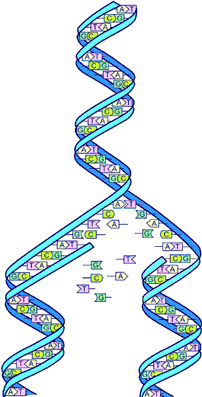

Parents?
If one buys the Genoa origins of Columbus, he was born the eldest child of Domenico Colombo and Susanna Fontanarossa. Their first child was Cristoforo, in 1451; later came Giovanni Pellegrino, Bartolomeo, Giacomo, and daughter Bianchinetta.
Marriage & Children
During his time in Portugal, Columbus married Doña Felipa Perestrello y Moniz, the daughter of a Portuguese nobleman around 1478. In about 1480 she bore him a son, Diego. Soon after Diego was born in 1480 or 81, Columbus and Felipa moved to the island of Madeira from Porto Santo, where they had been living when Diego was born. It's believed that Columbus’ wife died soon thereafter. He moved to Spain in 1485
During this time in Spain waiting to get approval for his voyage he met another woman, Beatriz Enriquez de Arana (1465-1520), Although Columbus never married her, in 1488 she bore him a second son, Fernando, out of wedlock. She was a peasant woman, who had been introduced to Columbus by a relative of hers, Diego de Arana, an officer on Columbus’ first voyage.
Son - Diego
Don Diego Colon (1480?-1526) was the only child of Columbus's marriage in 1478 to Dona Felipa Perestrello e Moniz (d. 1484?). Diego was made a page to Queen Isabella in 1492, and remained at court until 1508. He became a soldier in the queen's bodyguard and his father's intercessor at the Spanish court. As legitimate heir to his father's estate, he assumed the title of second admiral of the Indies after Columbus's death and was appointed governor of Hispaniola in 1509. Diego Columbus married Maria de Toledo y Roxas on 1520, daughter of Fernando Alvarez de Toledo y Enriguez and Maria de Roxas. They had one son Luis Colon y Toledo, b. February 1519/20, Santo Domingo, d. date unknown.
The authority of Diego Velazquez as governor, however, had become too firmly established, and Diego was met by opposition. Visiting Spain in 1520 he was favourably received and new honours bestowed upon him. However, in 1523, he had to return again to Spain to answer charges against him. The remainder of his life until 1526 was taken up by the suit of the heirs of Columbus against the royal treasury (a legal battle that was only finalised in 1564)
Diego died at Montalvan, near Toledo, 23 February, 1526.
Diego's son, Don Luis Colon (1521?-1572), turned out to be a wastrel who married four times and left numerous children. For him, Diego's widow renounced all privileges of the family in exchange for a pension, the island of Jamaica in fief, an estate on the Isthmus of Panama, and the titles of duke of Veragua and marquis of Jamaica.
Luis Colon y Toledo (son of Diego Columbus and Maria de Toledo y Roxas) was born February 1519/20 in Santo Domingo. He married Maria de Orozco on 1560, daughter of Fransisco Juancho de Luyando and Maria de Orozco. Children of Luis Colon y Toledo and Maria de Orozco are: Maria Colon de Luyando, d. date unknown. He was imprisoned for polygamy and banished to Oran, Algeria, where he died.
Son - Fernando
Ferdinand, or Fernando, was the second son of Christopher, by Doña Beatriz Enriquez, a lady of a noble family of Cordova in Spain. Fernando was born at Cordova, 15 August, 1488; died at Seville, 12 July 1539.He was more gifted than his half-brother Diego, he was a favourite with his father, whom he accompanied on the last voyage. As early as 1498 Queen Isabella had made him one of her pages and Columbus in his will (1505) left him an ample income, which was subsequently increased by royal grants.
Fernando wrote well in Spanish. "Descripción y cosmografía de España", a detailed geographical itinerary begun in 1517, published at Madrid in the "Boletin de la Real Sociedad geográfica" (1906-07); and the life of the admiral, his father, written about 1534, the Spanish original of which has been lost. It was published in an Italian translation by Ulloa in 1571 as "Vita dell' ammiraglio", and re-translated into Spanish by Barcia. "Historiadores primitivos de Indias" (Madrid, 1749). His biography of his father, the Historie, is the best primary source on the explorer's life.
Relations between Columbus's legitimate and illegitimate families were cordial. The half brothers sailed together, and Ferdinand later defended Diego's rights as their father's legitimate heir. Ferdinand accompanied his father on his fourth voyage in 1502 and embarked with Diego in 1509.
Returning to Spain, he settled in Seville and built a sizable fortune from royal appointments plus his own considerable holdings in Hispaniola. An scholar, collector, and traveler, he assembled a library of 15,000 volumes. According to Morison, he was "the first European intellectual to bring fresh air from the New World into European letters." Ferdinand never married.
Brother - Bartholomew.
Bartholomew, elder (?) brother of Christopher, born possibly in 1445 at Genoa; died at Santo Domingo, May, 1515. Like Christopher he became a seafarer at an early age. After his attempts to interest the Kings of France and England in his brother's projects, his life was bound up with that of his brother. It was during his time that bloodhounds were introduced into the West Indies. During Christopher's last voyage took the leadership at critical moments. After 1506 he probably went to Rome and in 1509 back to the West Indies with his nephew Diego.
Brother - Diego
Diego, younger brother of Christopher and his companion on the second voyage, born probably at Genoa; died at Santo Domingo after 1509. After his release from chains in Spain (1500) he became a priest and returned to the West Indies in 1509.